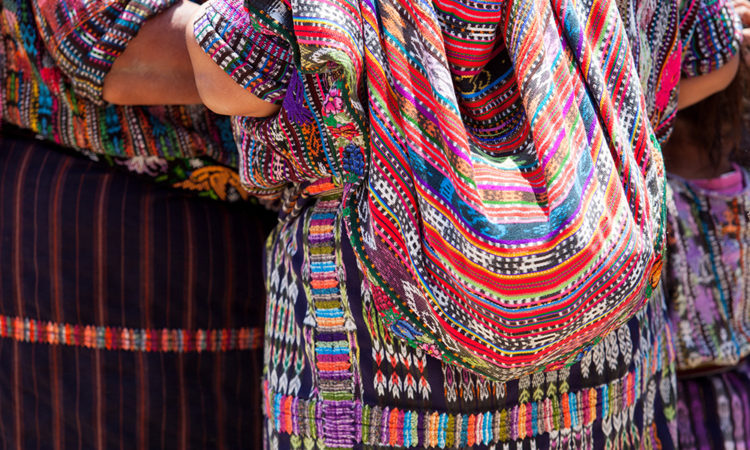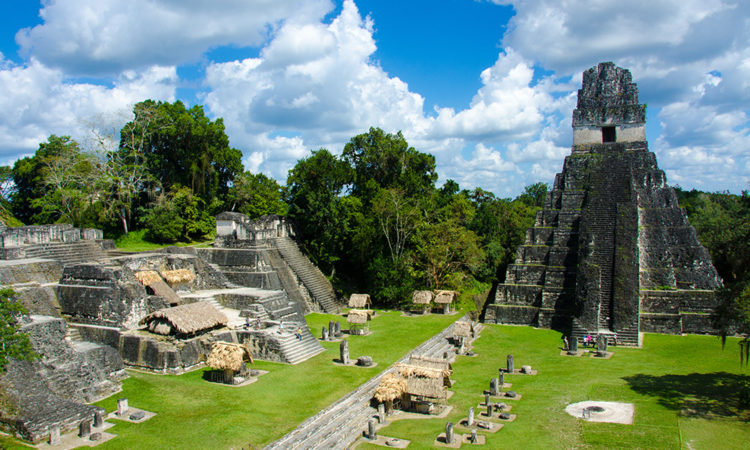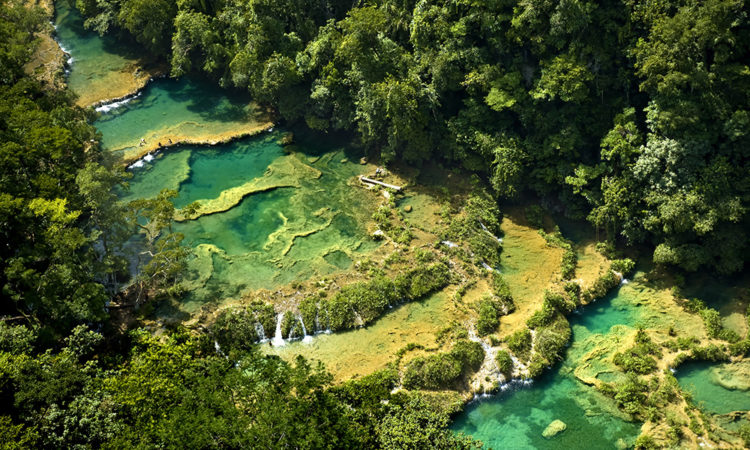Guatemala
Guatemala was the heart of the Mayan civilization and still retains much of its legacy. Though the Mayans abandoned their jungle cities centuries ago the Mayan people are still very much alive, mostly in the highlands that criss-cross the country. These colourful indigenous people still maintain much of their rituals and traditions but are now fused with the Spanish catholic colonial culture of the conquistadors. The other beguiling character of this nation is the extraordinary natural beauty of the landscape.
A great starting point is the pretty little colonial town Antigua. Although much of the city was destroyed in 18th century earthquakes, much has been painstakingly rebuilt and is still thoroughly charming. Meander through the cobbled streets, under the famous arch and people watch in the central plazas. Hotels in Antigua are surprising stylish with a plethora of new boutique hotels housed in the colonial architecture. This is one of the best places to witness the Semana Santa fiestas. It is also a popular place to learn Spanish.
Lake Atitlan was once described by British novelist Aldous Huxley as ‘the most beautiful lake in the world’, few that visit would disagree. The backdrop of volcanoes that created the lake thousands of years ago make it particular scenic for hikes and mountain biking, and the lake is continually changing colour throughout the day. Surrounding the lake is a patchwork of Mayan agricultural farming land still used today. Mayan culture is still profoundly strong here. Sleepy villages dot the lake’s shores inhabited by traditionally dressed locals.
Arguably one of the best markets in the Americas and the biggest in Central America is in Chichicastanango, affectionately known as Chichi. The quiet highland town comes alive on Thursday and Sunday market days when tens of thousands of indigenous locals descend to buy and sell beautiful crafts. It’s a great place to pick up a souvenir and brush up on your bartering skills. The interesting fusion of Catholic and Mayan religions is evident in the ceremonies and offerings to the gods outside the church. Further to the west are more traditional villages and markets and a good bases to explore from are Quetzaltenango and Todos Santos Cuchumatán.
Of all the Mayan ruins none are so magnificent as Tikal is located in the dense northern Peten jungle lowlands close to Belize and Mexico. The ancient Mayan temples dates back to 700 BC and was used as a location in the original Star Wars movie. The sprawling complex was once made up of over 3,000 structures. The towering peaks of the pyramids poke up above the canopy and along with the call of howler monkeys and toucans is a magical experience. For archaeology buffs, there are countless other nearby ruins to explore including Ceibal, Aguateca and Yaxha.
On the Pacific Coast are surfing beaches, mangrove swamps and turtle nesting sites; over on the Caribbean side at Livingston, meet the Garífuna people and relax or go on a boat trip to see manatees.
Featured members
Airlines
Essentials
| Capital: | Guatemala City |
| Size: | 108,889 km² |
| Population: | 15.47m |
| Currency: | Quetzal |
| Language: | Spanish |
| Visas: | Not required by UK nationals. |
Recent news View all news >
Good to know

Local dishes include pepián - thick meat stew with vegetables and patín - tomato-based sauce served with pescaditos, small fish from Lake Atitlán wrapped in leaves.
Cold, freshly made refrescos and ice creams are delicious. Excellent coffee is grown in the highlands but only in big towns can you get an espresso or cappuccino. Rum is popular the amazingly smooth Ron Zacapa Centenario is one of the best in the world.

Holy Week in Antigua is the most important, when bright carpets, made of sawdust and flowers are laid along the processional route. The parade of thousands of penitents in purple robes is an unforgettable sight. Other festivals include the Day of the Dead (1 November) in Todos Santos Cuchumatán (spectacular horse race) and giant kites in Santiago Sacatepequez; the Orchid Festival in Cobán in November; in December Fiesta de Santo Tomás in Chichicastenango. On 7th December Quema del Diablo, is when folk burn wooden devils to cleanse the bad from the previous year.

Climate varies with altitude, but generally the driest time is between November to April. The Pacific and Caribbean coasts are by and large hot all year round. The mountainous regions have pleasant spring-like climates with warm days and chilly nights. In December and January there may be frost in the early morning at the highest elevations. Tikal and the dense lowland rainforests are hot and humid most of the year.










